The iceberg was left behind after the collision, it would have been too risky to get too close to the iceberg, ice is slippery, and people simply wouldn’t go onto the iceberg.
There are a few reasons: first, the ship continued for some distance (a mile or so) after hitting the iceberg. It wasn’t as though the iceberg was next to the ship when it was sinking. Even if it was, climbing it would be next to impossible for hundreds of passengers.
I must have watched Titanic – a Hollywood movie released in 1997 that depicted a fictionalized account of the sinking of the RMS Titanic – countless times. One particularly memorable time, I was watching it with a friend who made a very interesting observation after the movie ended: ‘Why couldn’t the passengers of the ship get off and climb the humongous iceberg (with which the ship collided) and wait there until help arrived?’
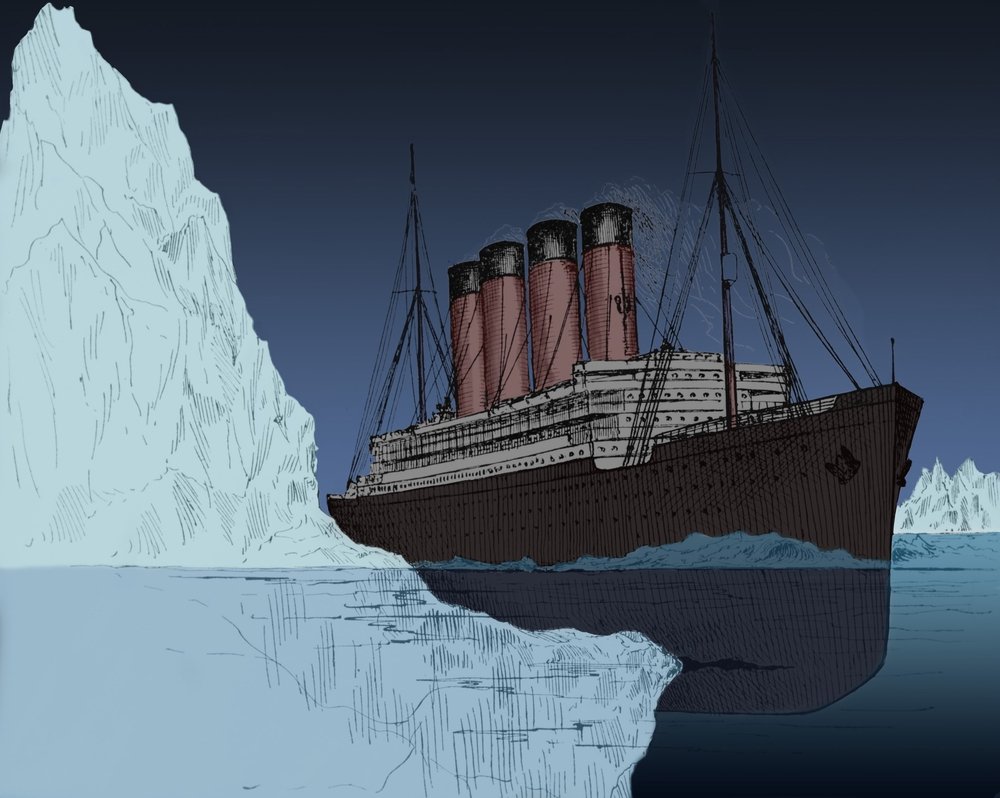
I think quite a few people might think that was indeed a plausible solution to the problem. After all, the ship had sustained a glancing blow and sank completely around 2.5 hours after it struck the iceberg, which means that there was a reasonable amount of time for some of the passengers (those that remained on the ship after a few hundred were ferried away in lifeboats), if not all, to climb up the iceberg and wait there for help.
But that obviously didn’t happen in reality. Why?
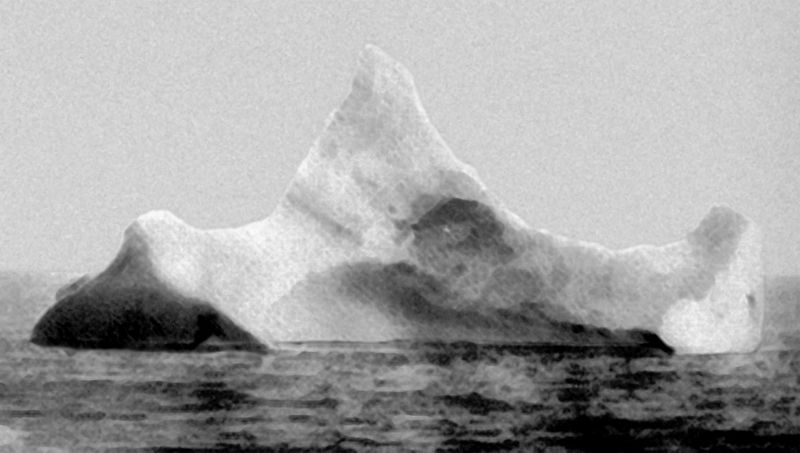
The iceberg suspected of having sunk the RMS Titanic. This iceberg was photographed by the chief steward of the liner Prinz Adalbert on the morning of April 15, 1912, just a few miles south of where the “Titanic” went down. The steward hadn’t yet heard about the Titanic. What caught his attention was the smear of red paint along the base of the berg, indication that it had collided with a ship sometime in the previous twelve hours. (Photo Credit: Wikimedia Commons)
The Iceberg Was Left Behind After The Collision
Sources claim that just before hitting the iceberg, the Titanic was steaming at a staggering 22 knots (41 kmph or 25 mph).
This may not sound very fast for land vehicles, but for ships, it is considered very fast. The fact that the top speed of the Titanic was 24 knots should give you some idea of how fast the ship was going when it collided with the iceberg.
Another noteworthy thing about giant ships is that, unlike land vehicles, which can decelerate from a speed of 100 miles per hour to 0 in a few seconds, ships take their sweet time before coming to a halt after their engines are killed. This is why it’s believed that an ocean liner as big as the Titanic (and with all that momentum) would have easily travelled at least a mile before coming to a complete halt.
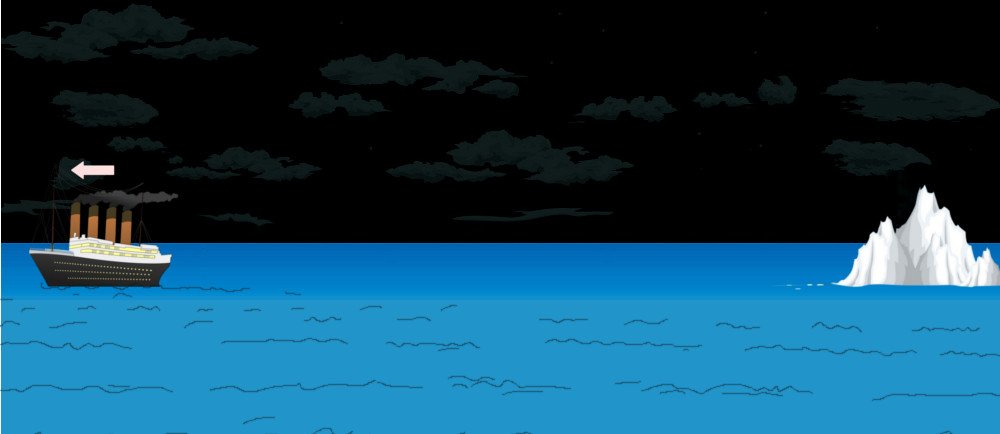
In other words, when the Titanic sank, the iceberg that caused the collision was left far behind in the darkness, out of reach for the crew and passengers to even consider climbing it.
Also Read: Would The RMS Titanic Have Survived If It Had Collided Head-On With The Iceberg?
Could The Titanic Take A U-turn And Reach The Iceberg?
You would think that the captain of the Titanic could have just reversed the ship, reached the iceberg and started transferring passengers onto it. Piece of cake, right?
Wrong!
As mentioned earlier, the Titanic had covered a substantial distance after hitting the iceberg. Returning to the iceberg wasn’t really a viable option, if an option at all, as the night was rather dark, meaning that starlight and the artificial lighting of the ship were the only two sources of illumination – far too inadequate to locate an iceberg (remember, spotters couldn’t locate it in the first place before the ship got too close and ended up hitting it) out in an open sea. There was no radar on the ship, which is another reason why they couldn’t even think of going back.
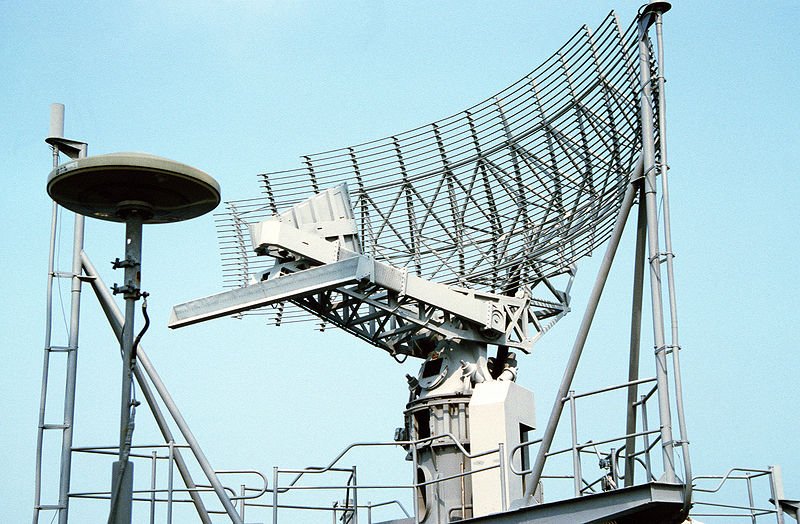
Furthermore, maneuvering a U-turn with an ocean liner as huge as the Titanic was quite an elaborate process, and would have used up precious minutes that could have been used on a different solution – one that did not rely on going back and locating the iceberg with which they had collided in the first place.
Also Read: Could Jack Have Somehow Survived The Titanic Disaster?
Getting Too Close To The Iceberg Would Have Been Too Risky
An iceberg is a humongous rock of ice floating on water, but only a small part of it is visible above the surface of the water.

If the iceberg was nearby, one plausible way of getting passengers onto the iceberg was by using gangplanks – movable planks used by passengers to board/disembark from a ship.
This technique would require bringing the ship very close to the iceberg, which would again be very, very risky as there was no way of knowing how far the iceberg extended beneath the surface of the water.
Also, this technique would require incredibly long gangplanks – something that they did not carry onboard the Titanic, as they did not plan on transferring passengers to rocks of ice in the middle of the voyage. Needless to say, this plan is riddled with impossible variables.
Ice Is Slippery
One shouldn’t forget that ice is quite slippery.

So, getting on the iceberg wouldn’t have been as easy as you might think at first. Icebergs are huge, so getting hundreds of scared-to-death passengers without any assisting equipment onto the iceberg would be a Herculean task (if possible at all).
Also, it doesn’t end there. Once on the iceberg, staying there without slipping into the icy cold waters all around would be equally challenging. An underlying assumption here is that people would somehow survive standing on the surface of a frozen rock, which is also a long shot.
People Simply Won’t Go Onto The Iceberg
The reasons we discussed above pertained exclusively to the technicalities of the transfer of passengers onto the iceberg.
Now, here’s a psychological factor: even if against all odds, you managed to park the ship next to the iceberg, and had all the proper equipment to board the iceberg ready, you would have a mighty hard time persuading passengers to actually disembark from the ship and climb onto the iceberg.
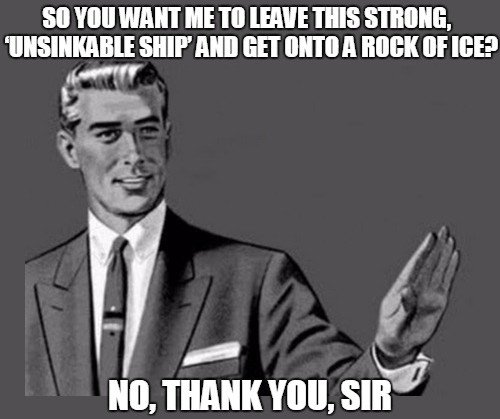
Believe it or not, but the crew of the RMS Titanic initially had a hard time cajoling the passengers on the deck to actually get into the lifeboats! It is said that millionaire John Jacob Astor, who was the richest passenger on the ship, declared: “We are safer here than in that little boat.” Sources also claim that some passengers refused flatly to embark.
These are only some of the countless reasons that prove that getting passengers onboard the iceberg wasn’t only practically impossible, but also a terrible idea.
Furthermore, one should not forget that with the benefits of hindsight, it becomes much easier to figure out elaborate plans and possible solutions that could have worked at that time.
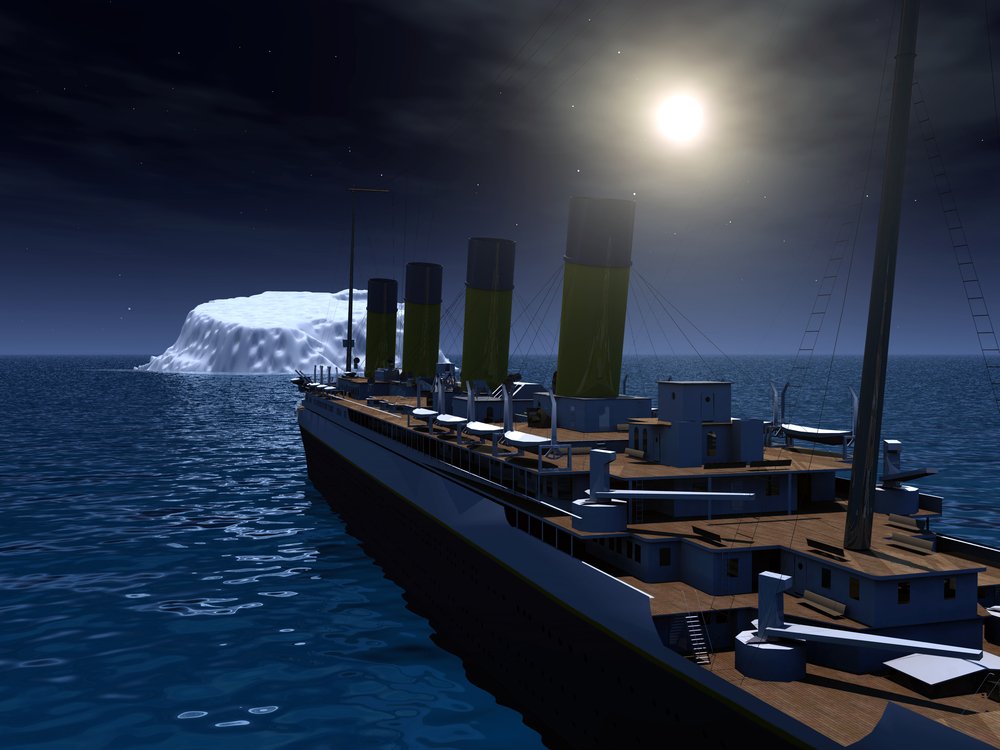
However, the conditions at the time when an ocean liner carrying more than two thousand souls was floundering and an environment of utter chaos rocked the ship must have been quite different, to say the least.
Test how well do you know about Titanic

